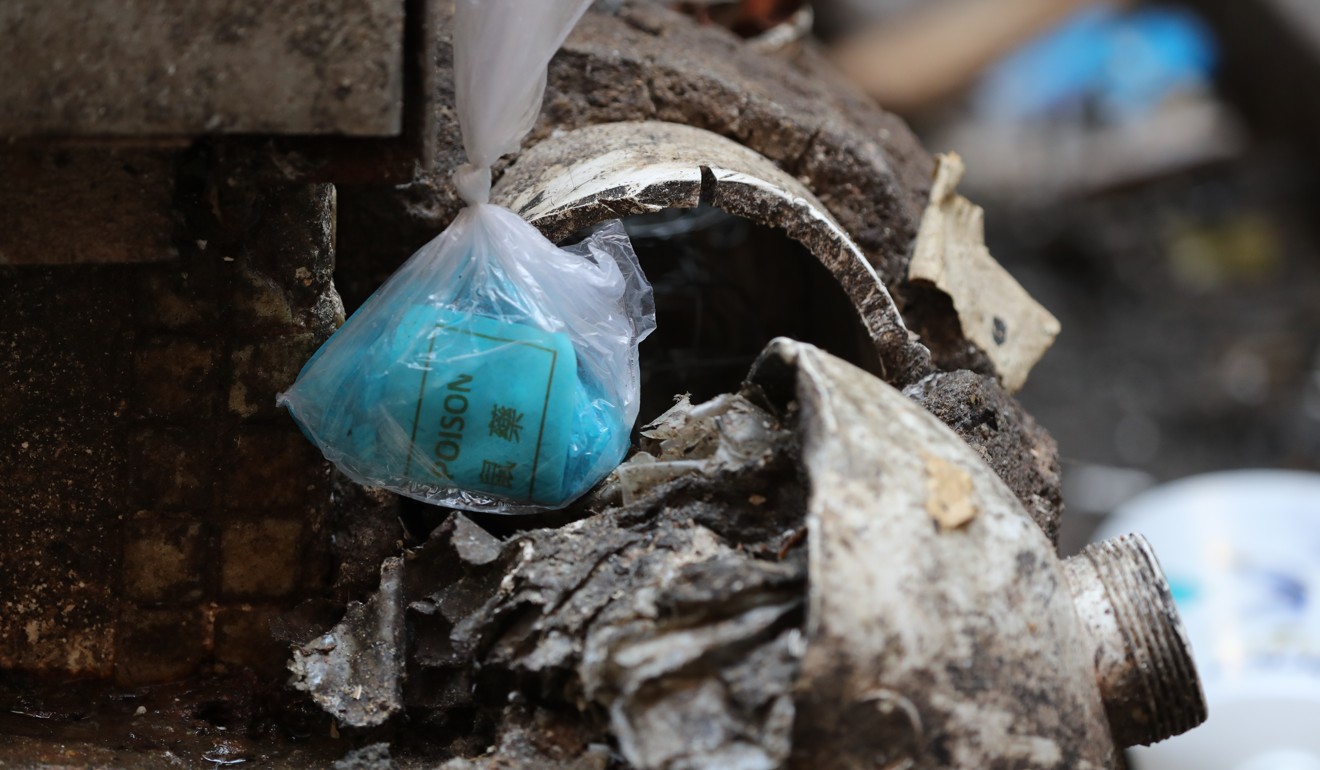
Hong Kong’s rat problem could be worse than first thought as pest control experts believe government ‘underestimated’ numbers on city streets
Infestation survey calculated using affect of rat poison distributed around 18 districts
Hong Kong’s rat problem could be far worse than first thought.
The reliability of the city’s rodent infestation surveys has been called into question, and pest control specialists said they believed numbers had been “underestimated”.
One technical consultant said he had seen 20 to 30 rats “partying” in the streets of Hung Hom, even though government figures for the first half of 2018 listed the district as having a low rate of infestation.

Since 2000, the government has compiled a rodent infestation rate for the city’s 18 districts. It calculated the percentage index by dividing the amount of rat poison consumed by rodents, with the total amount of bait collected from a specific area.
But Wong Tai Sin, the district where the man lives, had a rodent infestation rate of 1 per cent last year, sparking concerns over the survey’s accuracy.
Veteran rat catcher Gary Yam Wing-keung questioned the measurement process, and said the poison was difficult for rats to consume because it was wrapped in plastic bags, prompting the animals to resort to other “good food” in nearby restaurants, food waste and rubbish.
“When they [rats] don’t eat the bait, then the rate would be relatively low,” the technical consultant from Pestokill Pest Specialist said.

He said outsourcing the work of distributing the bait around the city was also part of the problem, because contractors would want to carry out the process for the lowest possible cost.
“The best way is to tightly seal [the bait], so that the rats cannot eat them,” he said. “[The firms] then need not replace the bait. This can save some cost.”
He cited Hung Hom as an example, and said he had seen 20 to 30 rats in a street there about two weeks ago, “as if they were having a party”.
However, the registered infestation rate in the Kowloon City district is low, and according to the government figures for the first half of 2018, the district only recorded a rate of 0.9 per cent.
Rats ‘as big as kittens’ walk up the staircases at Hong Kong housing estate
Yam said similar surveying methodologies were commonly used in other countries, but officers elsewhere make holes on the bait packaging for animals to eat them easily.
Hong Kong government should adopt this approach, he said, and more bait should be placed in every district, rather than the scattered approach that is now taken.
Fellow expert Henry Cheng Kwok-hang, senior pest control manager at Ivy Pest Control Corporation, also cast doubt on the government’s calculation method.
“Some rats may take away one bag of bait with just a bite, and some bags might be damaged, so I think there would be errors”, he said.
To improve the accuracy, he proposed officials calculate the number of rats caught and dead rats collected, as well as including private buildings in their surveys.
Rats! Hong Kong finally beats Singapore at something
On Saturday, the Post paid a visit to To Kwa Wan, part of the Kowloon City district, and found a 10-inch dead rat outside a printing shop on Wan Fuk Street.
Shop owner Kin Kwok said it was a normal occurrence, and he always saw rats scurrying on the street, even during daytime.
Kwok said that a few years ago a “chubby” rodent had gone into his shop and made a mess for a week.
“To be honest, how would I not be scared? But I am a man, that’s why I was not too afraid of it,” the 55-year-old said.
Kwok said he was cautious whenever he opened the door, just in case any of the creatures sneaked into the shop.
Leung Chiu-lun, who works for a hardware factory on the same street, said he had rat infestation issues in his property. He said he would pick up the bait on the street, and put it into areas he found with rodents.

“I’ve lost count of how many dead rodents I collected,” he said.
In a tenement building in the same area, rat droppings were found near the windows on multiple levels. Rubbish bins without lids were located in the staircases, with food waste, tissue and empty cans scattered around.
Sham Shui Po resident Mandeep Singh described similar scenes in his residential building near the wet market on Pei Ho Street. The street he stayed on had dirty drains.
The 31-year-old said he saw rats on the staircase every night.
“When I am walking up, I am so scared. It’s because there are lots of rubbish here,” he said.
The district, which saw a 4.1 per cent infestation rate in the first half of this year, was ranked fifth among the city’s 18 districts.

